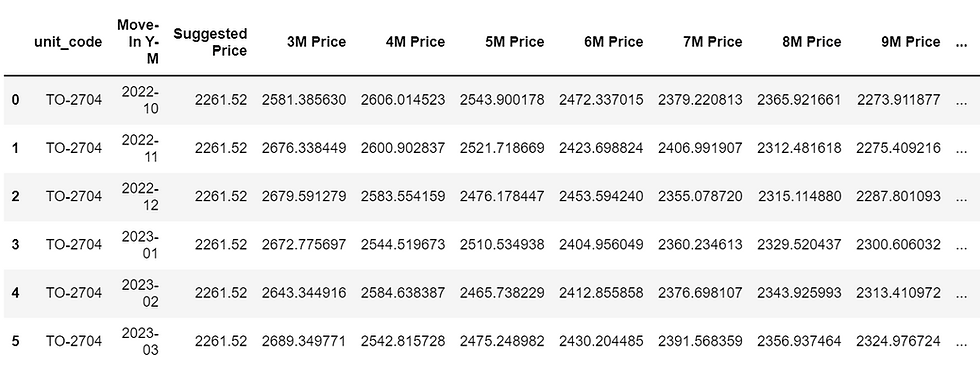Analytics Spend in Canada
- christianpetrozza
- Mar 19, 2021
- 3 min read
Data analytics and big data have become buzzwords in recent years, but not just because of their popularity in advanced research but also because of the diverse benefits that both services provide. Data Analytics is the process of inspecting, cleansing, transforming, and modelling data with desire to discover insightful information to support decision making.

The world has been putting increasing attention into the incorporation of big data and data analytics since the late 1960s when computers were able to act as decision making support systems. Since then, the fundamentals haven’t changed much, with the only difference being the power of computers and the advancement of analytical techniques. However, the end goal remains the same – to act as decision making support systems.
The big data and analytics industry in itself is very large on a global scale with approximately $189 billion in revenue in 2019 and a projected $274 billion in 2022. These numbers reflect only a portion of the money companies have spent trying to gain the power of impactful analytics. From the graphs below it is easy to see the diverse industries who are currently using big data and data analytics. Industries such as banking, manufacturing and professional consulting contribute to large portions of this total revenue.
https://www.statista.com/statistics/551501/worldwide-big-data-business-analytics-revenue/
https://www.statista.com/statistics/616225/worldwide-big-data-business-analytics-revenue/Dissecting this Global revenue further, North America leads in big data analytics market share and accounts for more than 35% of total global revenue. This is primarily attributed to North American companies being one of the early adopters of new technological advancements.
Canadian Analytics Usage Statistics
Analytics Platforms
Like people, businesses vary and require the proper analytics tools in place that fit their unique business objectives, budgets and capabilities. They are also subject to size dependencies, industry types, and revenue. A study by CFERF in partnership with SAP showed that 78% of Canadian companies are using spreadsheets like Excel as their organizations main source of business analytics. With private companies using this form of data storage more than public companies. These finding are also dependent on the size of the organization, with larger companies using more specialized business intelligence software’s as opposed to spreadsheet applications. Of course spreadsheets provide some benefits, like personalization, that are not achievable on specialized business intelligence software’s, but they also provide downfalls such as loss in efficiency.
Data Analytics Capabilities
Data analytics is a diverse subject and is capable of being utilized at almost every stage and division within an organization. The same Survey by CFERF looked at Canadian companies ability to utilize their data in various fields of operations. The majority of companies were confident in their ability to do financial reporting with their analytics capabilities. However, a lot of the companies began to lose confidence in their analytics capacities when moving from financial reporting into more insight based data analysis such as real time insight generation, big data management and KPI Tracking.
https://www.feicanada.org/ajaxfilemanager/uploaded/CFERF/REPORTS/Data%20Analytics%20in%20Canada%20-%20V5%20FINAL.PDFIndustry Distributions
Canada's big data service market is estimated to generate revenue of approximately $1.5 billion annually. With almost 55% of this revenue being generated in the province of Ontario. Excluding multinational organizations, approximately 67% of Canadian big data service providers are within service producing industries. Followed by manufacturing, which utilizes analytics for a variety of beneficial operational improvements. With the lack of studies conducted primarily on Canadian markets it becomes tough to distinguish the exact distributions of analytics spend and usage across industries. However, there has been an upward trend on analytics adoption across all industries - consistent with global trends.
https://www.ictc-ctic.ca/wp-content/uploads/2015/12/BIG-DATA-2015.pdfIndustry Benefits
These are just some examples of how big data and data analytics have and are being incorporated into industries across Canada:
E-Commerce - Customer Segmentation to improve site conversions and understand buying trends of classified customer groupings with the goal of improving overall services and increasing revenue.
Retail - Pinpoint improvement opportunities across supply chains, including everything from sourcing to purchasing and finally in store availability management.
Financial Services - Financial risk modelling, customer analytics, transaction analytics are among some of the few possibilities of data analytics in this industry.
Healthcare - Improving ease of diagnosis and patient care quality, as well as improving efficiencies and overall services.
Manufacturing - Asset utilization analytics, predictive maintenance, warranty analysis and improving overall operational understanding.
Conclusion
Although there is a lack of direct statistics targeted towards the analytics market within Canada, like the rest of North America and the world Canada is on its way to the complete adoption and utilization of analytics.















Really interesting read — I hadn’t realized how much analytics spending in Canada is growing across industries from retail to healthcare. One idea: I wonder how banks are using analytics to improve ATMs and reduce fraud or downtime. “Bank ATM” data could reveal patterns in usage times, maintenance needs, or even geographic demand. That could be a powerful extension of the insights here.
Thanks for the insights. I'm in the flower delivery business but this is true for that as well
Regards,
Monique
flower delivery Canada
Boost your brand with top-notch Content Writing Service in Quebec Drive engagement attract customers and enhance your online presence with quality content